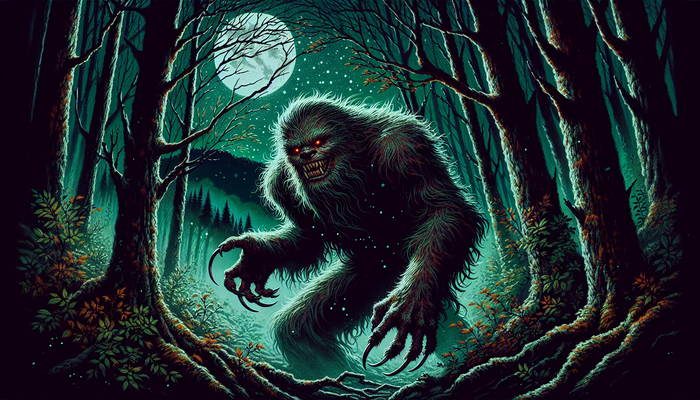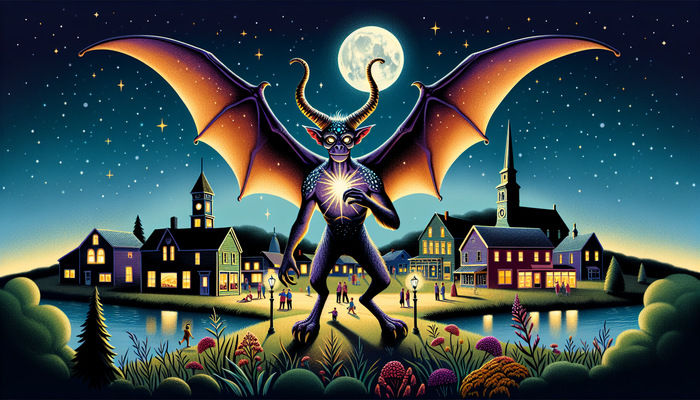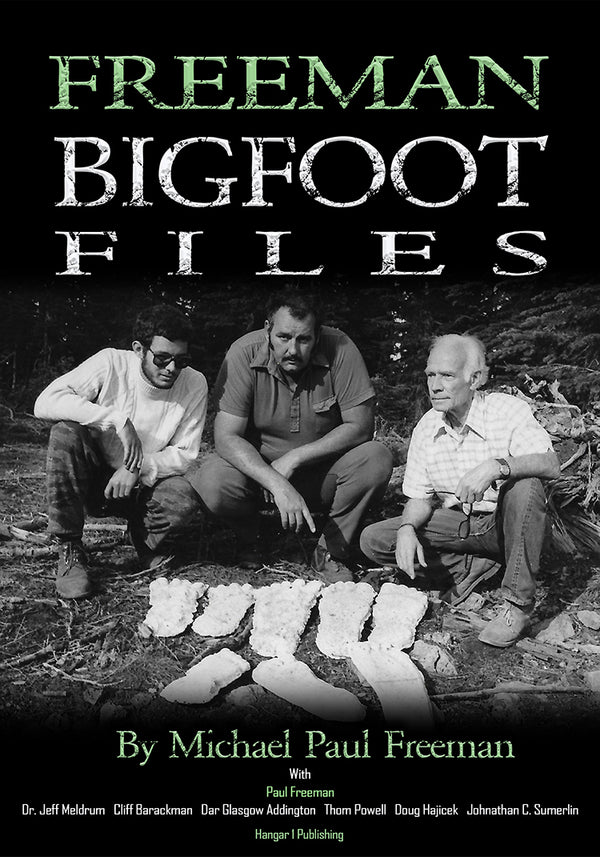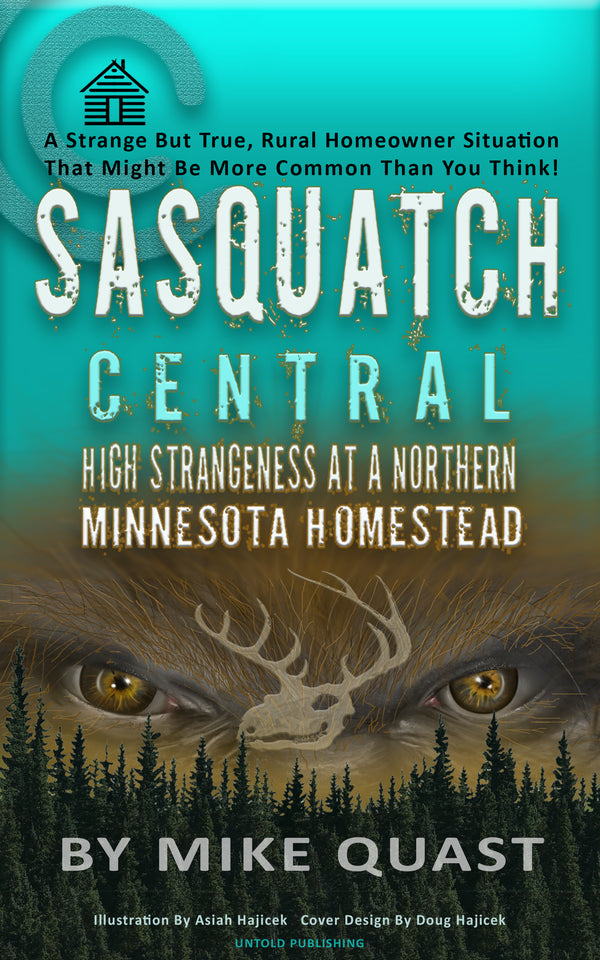Oregon's Bigfoot Sightings

By Lucas Jennings, Cryptozoologist
There's something about the dense forests and rugged wilderness of Oregon that seems to call out to the adventurous spirit in all of us. Perhaps it's the towering evergreens that stretch as far as the eye can see, or the misty mornings that cloak the landscape in an air of mystery. Or maybe, just maybe, it's the tantalizing possibility that somewhere out there, hidden among the shadows and the ferns, lurks a creature that has captured our collective imagination for generations: Bigfoot.
As an adventurous naturalist with a passion for the unexplained, I've long been fascinated by the enduring legend of Bigfoot. And there's no place quite like Oregon when it comes to Sasquatch lore. This state, with its vast expanses of untamed wilderness, has become a veritable hotspot for Bigfoot sightings, boasting a rich history and a vibrant culture surrounding this elusive creature.
In this article, we'll embark on a journey through Oregon's Bigfoot country, exploring the most famous sightings, the scientific debates, and the cultural significance of this legendary being. We'll delve into the stories that have captivated generations of Oregonians and examine the evidence—both anecdotal and physical—that has kept the Bigfoot mystery alive. So grab your hiking boots and your sense of adventure, and let's set off into the misty forests of Oregon, in search of the truth behind the legend.
Oregon's Bigfoot Hotspots
When it comes to Bigfoot sightings, Oregon is like a treasure map, dotted with X's marking the spots where this elusive creature has allegedly been spotted. From the rugged coastline to the towering peaks of the Cascade Mountains, there seems to be no corner of this state that hasn't been touched by the Bigfoot legend. Let's take a closer look at some of Oregon's most notorious Bigfoot hotspots.
The Oregon Caves National Monument
Nestled in the Siskiyou Mountains of southern Oregon, the Oregon Caves National Monument is a place of stunning natural beauty and, if the stories are to be believed, Bigfoot activity. The most famous sighting here occurred in July 2000, when psychologist Matthew Johnson, who was hiking with his family, claimed to have encountered a massive, hair-covered, bipedal creature.
Johnson, who had stepped away from his family to relieve himself, described the creature as an "upright walking ape-like creature," standing at an imposing 8 feet tall. Terrified, Johnson rushed back to his family, and they quickly left the area. Park rangers later investigated the site but found no conclusive evidence to corroborate Johnson's account.
But Johnson's sighting is far from the only one in this area. In 2005, hikers reported seeing a large, bipedal creature near the caves, while in 2006, a father and son claimed to have heard strange sounds while camping in the vicinity. And back in 2000, a couple reported hearing repetitive calls echoing through the forest near the caves. It seems that whatever is lurking in these mountains, it's not shy about making its presence known.
The Clackamas River Watershed
Moving northward, we come to the Clackamas River watershed, a region that has earned the nickname "The Oregon Bigfoot Highway." This stretch of National Scenic Byway No. 5, which winds its way from the town of Estacada to Detroit, has been the site of a staggering number of Bigfoot encounters over the years.
A group of dedicated researchers known as the "Clackamas Sasquatchians" have been meticulously documenting these sightings for over 15 years. Led by authors Joe Beelart and Cliff Olson, this intrepid team has compiled a dossier of 31 Bigfoot sightings, 43 track finds, and numerous other pieces of evidence pointing to the creature's presence in this area.
One of the most compelling accounts comes from a man named Dick Thomas, who in 1967 claimed to have witnessed a family of three Bigfoot—a mother, father, and child—digging for rodents in a talus field near Mount Jefferson. Thomas said the creatures vanished into the forest when they sensed his presence. For the Clackamas Sasquatchians, this sighting, along with the scores of others they've documented, is proof that these ancient forests are indeed home to something extraordinary.
The Siskiyou National Forest
Down in the southwestern corner of the state, the Siskiyou National Forest has long been a hotbed of Bigfoot activity. This vast expanse of old-growth forest and rugged mountains is home to the world's only known Bigfoot trap, a 10x10 foot wooden structure built in 1974 by the North American Wildlife Research Team.
The trap was constructed after a local miner reported seeing 18-inch footprints in the area, sparking a flurry of Bigfoot enthusiasm. For six years, the team baited the trap with meat, hoping to lure the creature inside. While they never caught a Sasquatch, the trap did snare a few bears and even an unlucky hunter, leading to its eventual closure in 1980.
But the Bigfoot legends in this area go back much further than the 1970s. Local Native American tribes have long told stories of "tsiatko" or "stick Indians," hairy, human-like creatures that roamed these forests. And in 1924, a group of miners on Mount St. Helens reported being attacked by "giant apes," an incident that made headlines across the state.
The Mount Hood National Forest
Heading east, we arrive at the Mount Hood National Forest, a place of towering peaks, pristine lakes, and, if the stories are to be believed, Bigfoot encounters. In 1996, a bowhunter and his father were scouting near Little Boulder Lake when they heard strange vocalizations and spotted the head and shoulders of a large, neckless creature peering at them from the underbrush.
More recently, in 2014, a group of campers near the Sixes River reported hearing eerie howls and catching a glimpse of a large, hairy figure walking through the woods. These sightings, along with numerous others over the years, have cemented Mount Hood's reputation as a Bigfoot haven.
Urban Sightings in the Portland Area
But it's not just the remote wilderness areas where Bigfoot has been spotted. Even the urban sprawl of Portland and its surrounding suburbs have had their share of Sasquatch encounters.
In 2003, a woman and her son were driving near Multnomah Falls when they claim to have seen an 8-foot-tall, dark-furred creature dash across the freeway and disappear into the woods. And in 2008, four campers near the town of Estacada reported hearing wood knocks and guttural vocalizations around their campsite, followed by a brief sighting of a large, bipedal figure in the forest.
These urban sightings serve as a reminder that even in our most developed areas, there may be something wild and unexplained lurking just beyond the edge of the streetlights.
The Scientific Debate
For as long as people have been reporting Bigfoot sightings, there have been those who have sought to explain them away. The scientific community, in particular, has been largely skeptical of the Bigfoot phenomenon, dismissing the creature as a product of misidentification, hoaxes, and overactive imaginations.
Skepticism from the mainstream scientific community
The main argument from Bigfoot skeptics in the scientific world is the lack of conclusive physical evidence. Despite decades of alleged sightings and track finds, no one has ever produced a Bigfoot body or even a definitive DNA sample. Without this hard proof, many scientists remain unconvinced.
There's also the issue of misidentification. Skeptics argue that many Bigfoot sightings can be explained by people mistaking known animals, such as bears or even large humans, for something more fantastical. They point to the fact that eyewitness testimony is notoriously unreliable and that people's perceptions can be easily skewed by fear, excitement, and preconceived notions.
And then there are the hoaxes. Over the years, numerous individuals have come forward claiming to have fabricated Bigfoot evidence, from footprints to grainy video footage. These hoaxes, skeptics argue, have muddied the waters and made it even harder to take the Bigfoot phenomenon seriously.
Researchers who take Bigfoot seriously
But not everyone in the scientific community is so quick to dismiss the possibility of Bigfoot. There are a handful of researchers out there who have dedicated their careers to investigating this mystery, and they believe that the evidence, while not conclusive, is compelling enough to warrant further study.
One of the most prominent figures in this field is Dr. Jeff Meldrum, a professor of anatomy and anthropology at Idaho State University. Meldrum has spent years analyzing alleged Bigfoot footprints, and he believes that many of them display characteristics that are difficult to dismiss as fakes.
Meldrum points to the dermal ridges (think fingerprints, but for feet) that have been found in some Bigfoot tracks, arguing that these intricate details would be extremely difficult for a hoaxer to fabricate. He also notes the consistency in the shape and proportions of the prints, which he believes points to a genuine, biological source.
Another group of researchers that have taken up the Bigfoot mantle are the Clackamas Sasquatchians, the intrepid team of investigators we met earlier. For over a decade, these dedicated individuals have been conducting field research, interviewing witnesses, and compiling evidence in an effort to get to the bottom of the Bigfoot mystery.
While they haven't uncovered any smoking gun evidence yet, the sheer volume and consistency of the reports they've collected has convinced them that there's something real and unexplained happening in these forests.
Theories about Bigfoot's origins
So if Bigfoot is real, what exactly is it? That's the million-dollar question, and it's one that has spawned numerous theories over the years.
One popular idea is that Bigfoot could be a relict population of Gigantopithecus, a genus of giant ape that went extinct some 300,000 years ago. Proponents of this theory point to the similarities in size and appearance between Bigfoot descriptions and what we know about Gigantopithecus from fossil evidence.
However, there are some significant problems with this idea. For one, Gigantopithecus is only known to have lived in Asia, while Bigfoot sightings are concentrated in North America. There's also no fossil evidence to suggest that Gigantopithecus ever made it to the New World.
Another theory that has gained some traction is the idea that Bigfoot could represent a "missing link" between humans and our more primitive ancestors. Some researchers have suggested that Bigfoot could be a surviving population of a species like Homo erectus, which is known to have used tools and controlled fire.
This theory is intriguing, as it would explain some of the more human-like behaviors that have been attributed to Bigfoot, such as wood knocking and rock throwing. However, like the Gigantopithecus theory, it suffers from a lack of fossil evidence. If a species of primitive human had survived into the modern era in North America, one would expect to find some trace of it in the archaeological record.
Ultimately, the truth about Bigfoot's origins, if it exists at all, remains a mystery. But that hasn't stopped researchers and enthusiasts from speculating and searching for answers.
Bigfoot in Oregon's Culture and Folklore
While the scientific debate about Bigfoot's existence rages on, there's no denying the creature's cultural impact, particularly in the state of Oregon. Here, Bigfoot is more than just a cryptozoological curiosity; it's a deeply ingrained part of the state's folklore and identity.
Native American Legends
Long before the term "Bigfoot" entered the popular lexicon, the indigenous peoples of Oregon had their own stories and legends about hairy, human-like creatures that roamed the forests. The Chinook, Klamath, and Lummi peoples all have traditions that speak of these beings, which they variously called "Skookum," "Stick Indians," or "Hairy Men."
These creatures were often described as powerful, elusive beings that possessed a deep connection to the natural world. They were said to have the ability to communicate with animals and to possess supernatural powers, such as the ability to turn invisible or to control the weather.
For many Native American tribes, these Bigfoot-like creatures were not just mythical beasts, but an integral part of their spiritual beliefs and cosmology. The Lummi people, for example, believe that the "Hairy Man" is a guardian spirit that watches over the forest and its inhabitants.
On the Warm Springs Reservation in central Oregon, the "Stick Indians" are considered a very real presence. These beings are said to inhabit the dense forests around the reservation, and are known for their ability to lure people away from trails and cause them to become lost. Many tribal members have reported encounters with these creatures, and some even leave offerings of food or tobacco to appease them.
Bigfoot as Oregon's Unofficial Mascot
Given the prevalence of Bigfoot legends in Oregon's history and culture, it's perhaps no surprise that the creature has become something of an unofficial mascot for the state. Across Oregon, you'll find Bigfoot-themed events, festivals, and attractions that celebrate this elusive beast.
One of the most notable of these is the North American Bigfoot Center in Boring, Oregon. Founded by Cliff Barackman, a co-host of the popular television series "Finding Bigfoot," this museum is dedicated to all things Sasquatch. Visitors can peruse exhibits featuring alleged Bigfoot footprint casts, hair samples, and other evidence, as well as learn about the history and lore surrounding the creature.
But the Bigfoot Center is far from the only Sasquatch-centric attraction in the state. The town of Boring is also home to the Bigfoot Discovery Project, which features its own museum and gift shop. And every year, the city of Troutdale hosts the Oregon Bigfoot Festival, a celebration of all things Sasquatch that includes presentations from Bigfoot researchers, guided hikes, and even a Bigfoot calling contest.
From Bigfoot to UFOs: Hangar 1 Publishing Has You Covered!
Explore Untold Stories: Venture into the world of UFOs, cryptids, Bigfoot, and beyond. Every story is a journey into the extraordinary.
Immersive Book Technology: Experience real videos, sights, and sounds within our books. Its not just reading; its an adventure.



























